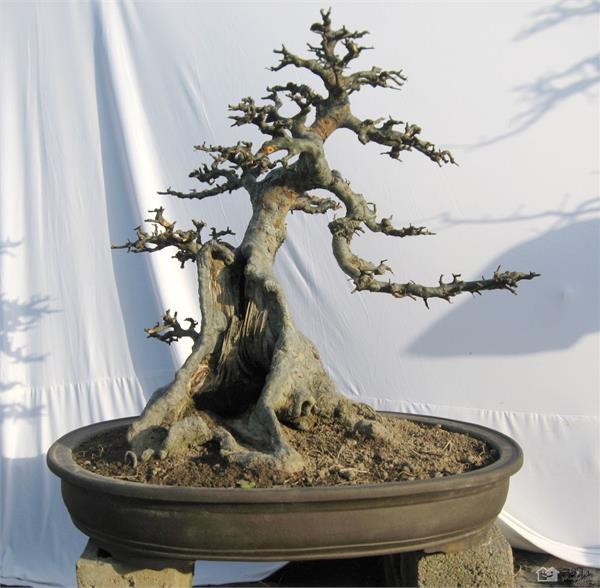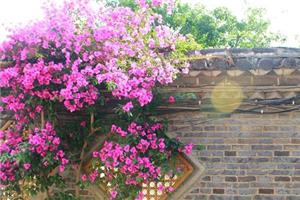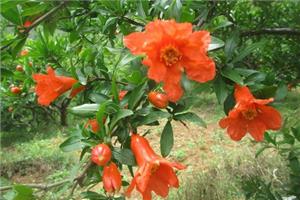How to maintain elm bonsai cultivation elm bonsai need to pay attention to what
How to raise elm bonsai? Speaking of elm, I believe that many post-8090 friends will be very excited. When I was a child, I picked some elm money and washed it in the yard and ate it. In fact, elm trees can be made into bonsai and raised at home, so how to maintain elm bonsai? What should I pay attention to? Let's take a look at how to raise elm bonsai.

How to raise elm bonsai
I. the process to be carried out in the production of elm bonsai
1. The old piles of elm trees that have just been excavated should be planted on plain sand land or planted in tile pots to "raise piles". It is generally carried out from late autumn to spring (the survival rate is the highest in the two or three months before sprouting). Before planting, the roots and branches should be pruned first, and the viscous sap often flows out at the cut. If the liquid exudates too much, it will seriously affect the survival rate. Use paint, wax seal in the cut, you can also apply a layer of erythromycin ointment or sulfonamide ointment, and then sprinkle with fine sand. Compact the soil as much as possible after planting, but you don't have to water it. You only need to spray fresh water on the branches twice a day, and then water it again 4 days later. It is forbidden to accumulate water in the soil if it is not dry or watered in the future.
2. Secondly, according to the basic shape of the old pile, the elm bonsai should be made into different forms of bonsai, such as straight dry type, curved dry type, oblique dry type, water-facing type, cliff type, wind type, jungle type, stone-attached type and so on. The shape of elm bonsai can be either in the growing period or in the dormant period, but it is necessary to avoid the budding period so as not to lose too much sap and affect the plant growth. Its form can be processed into straight dry type, curved dry type, oblique dry type, dry type, water-facing type, cliff type, jungle type and other different forms of bonsai according to the basic shape of the stump. The crown can not only be natural, but also can be shaped by a big tree with a dome, and can be processed into a regular disc shape. The modeling method is to tie and cut at the same time, first using wire to tie out the basic shape, and then fine pruning.
3. After survival, the elm has strong habits and extensive management. The bonsai can be maintained in a place with sufficient light and good ventilation to keep the basin soil moist without stagnant water. when the summer air is dry, a little water should be sprayed to the plant to increase the air humidity and make the leaf color fresh. Apply mature rarefied liquid fertilizer every 20 days or so. Elm bonsai has strong germination and fast growth, so it should be pruned frequently, which not only keeps the tree shape graceful, but also increases the light transmittance of the plant.
4. The germination of elm is very strong and grows fast. In the growing season, it is necessary to prune frequently and cut off overlong and disorderly branches in order to keep the tree shape graceful. The best viewing period of elm bonsai is when the new leaves are just coming out, if all the leaves are removed in the first and middle of August, and the management of water and fertilizer will be strengthened later, new leaves will grow again in late September to improve the ornamental value. In winter, the pot can be buried in the outdoor shelter to the sun or moved to the cold room to overwinter, the temperature should not be too high, otherwise the plant can not be fully dormant, affecting the growth of the coming year. When the basin is turned in early spring every 1 to 2 years, it can be planted in sandy soil rich in humus, loose and breathable, and well drained. In the maintenance, the basin is turned every 2mura-3 years to make the bonsai grow exuberantly and full of vitality.
II. Conservation of elm bonsai
1. Lighting: strengthen the illumination of elm bonsai. Elm bonsai like sunshine, shade tolerance is poor, the production of bonsai should be placed in a sunny place. Lack of sunlight, it will only grow branches and leaves very ugly, but also easy to cause insect pests.
2. Watering: although elm likes to grow in wet places, it is also afraid of water stains. Therefore, each watering should be thoroughly watered in the morning and evening at the height of summer, and the basin soil must be kept moist without stagnant water.
3. Fertilization: Elm bonsai need not be fertilized too much, as long as it is applied once each year in early spring and early autumn.
4. Pruning: because the growth of elm is very strong, we need to prune diligently to maintain the ornamental value of elm bonsai. Pruning and shaping can be carried out in autumn, cutting off useless branches and diseased branches, and then pruning.
5. Diseases and insect pests: the elm bonsai is often harmed by aphids and clams. We can spray it with omethoate diluted with 1000 times water.
The above is the relevant introduction of this article, I believe you have a simple understanding of this after reading it, if necessary, you can continue to pay attention to the No. 1 home network for more information.
Related
- Wuhan Hospital Iron Tree Blooming Result Was Instantly Frightened by the Gardener Master
- Which variety of camellia is the most fragrant and best? Which one do you like best?
- What is the small blue coat, the breeding methods and matters needing attention of the succulent plant
- Dormancy time and maintenance management of succulent plants during dormancy
- Minas succulent how to raise, Minas succulent plant pictures
- What are the varieties of winter succulent plants
- How to raise succulent plants in twelve rolls? let's take a look at some experience of breeding twelve rolls.
- Attention should be paid to water control for succulent plants during dormant period (winter and summer)
- Watering experience of twelve rolls of succulent plants
- Techniques for fertilizing succulent plants. An article will let you know how to fertilize succulent plants.



